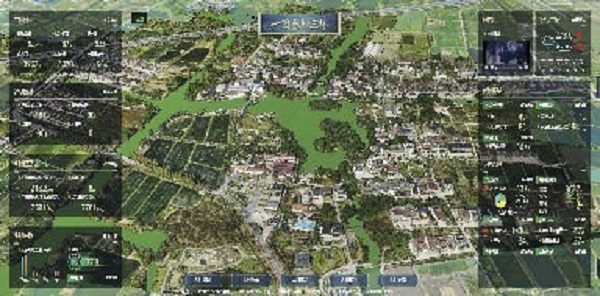
A livestreaming host is selling smart fish with microchips, which provide people with all its information.
In the early morning of November 3, 2020, Chen Jiankun, who lives in Sanlin Village, Deqing County, Zhejiang Province, headed to his snakehead fishpond as he did every day. Snakeheads are a kind of elongated predatory freshwater fish. After feeding the fish, he took out a matchstick-sized plastic chip, “The chip is inserted in the skin of each fish, and consumers can know the origin of the fish and the information of the farmer by scanning each chip code via their mobile phones.”
Chen said that people’s knowledge of a fish in the past was based on their visual observation, but now by scanning a chip consumers can know the personal history of each fish. He hopes that digitalization can be applied further to various aspects of fish farming, such as monitoring the quality and temperature of the water in a pond, and dealing with the tedious daily routines of farming work to reach a point of smart farming or farm automation in the future.
According to Xiang Ji, a professor at the College of Electrical Engineering of Zhejiang University, the cost of each chip is around RMB 0.5. After inserting chips into the snakehead, a fish that was previously sold for RMB 7 per 0.5 kilograms can now be sold for RMB 20 for the same weight.
Another change greatly affecting Sanlin Village, which has a 20-year history of snakehead breeding, is the use of many remote operated vehicles floating quietly around the pond. Each vehicle is equipped with various sensors that can inspect and manage more than 1.3 hectares of fishponds in the village.
“Through these remote operated vehicles, we can know clearly which area has a problem with the fishing net or which area is suitable for growing snakeheads. As the scale of aquaculture expands in leaps and bounds, one person managing hundreds hectares of fishponds will be common in the future.”
Digitalization in Sanlin Village started in 2019. In April 2019, Zhejiang University set up the Digital Agriculture and Rural Informatization Research Center in Sanlin. The model of “universities and villages joining hands in cooperation” hopes to provide a pioneering model for the digital development in rural areas and an agricultural digital economy. Du Yingsen, director of the research center, said, “The core of digital development in rural areas is the deep integration of digital technology and rural rejuvenation, so as to form an innovative driving force for rural reform and development.”
Zhejiang University released China’s first digital village development index in June 2020 and participated in the construction of the country’s first local standards in digital development and governance of rural areas. Du said the University of Electronic Science and Technology of China, South China Agricultural University, and Nanjing Agricultural University also established their own institutions of digital development in rural areas.
A Digital Graphic of a Village
“Now it is much more convenient to report problems by the Internet,” said Jin Fenglin of Sanlin Village. Recently, he discovered the street light outside his house was malfunctioning. Instead of waiting to have it fixed, as he did in the past, Jin logged onto the official website of the government of Deqing County to directly report the problem. A day later the light was repaired.
Qian Huaying, a government official of Beipian District, Yuyue Town, said that now villagers can receive services dealing with marriage certificates, household registration, and medical insurance reimbursements with the click of a mouse. If a villager cannot get online, community workers can provide them with targeted help or they can do what they need at the local work station, which brings government services to the people.
There is a large graphic on the electronic screen at the Sanlin Village work station’s big data platform center. Pointing to the screen, Yao Fanglian, deputy Party secretary of the village, said, “We can see all kinds of information about our village on this graphic including business conditions, the surrounding environment, public opinion, and disputes among residents.” This helps to keep villagers, who are scattered across a wide rural area, up to date with what is going on locally when they visit the work station.
According to Yao, digital technology helps villagers to better manage their community. For instance, villagers can report sanitation and fire safety issues and upload photos to the government WeChat account with their mobile phones. The management of safety hazards has been improved. In the past, village officials would visit factories to inspect fire safety risks. Now, they can upload the problems they discovered in inspections to a digital platform and monitor the subsequent rectification online. Through the data connection with the public security department, officials can also track the dispute resolution process.

People can see all kinds of information about the village on this graphic.
Supported by All Social Resources
Last year, Chen Zhongliang, a 38-year-old villager, returned to Sanlin to start his own business. He graduated from Zhejiang Ocean University, with a degree in aquaculture science in 2004. After his graduation, he tried his hand at raising fish and turtles, and then decided to focus on the turtle industry. Seven years ago, he started his own online store. “Last year, I saw on TV that my village established a cooperative institution and livestreaming studio with Zhejiang University. E-commerce has made my hometown more prosperous,” said Chen. After participating in the e-commerce course at the village’s training school, his total annual sales, including online and offline business, exceeded RMB 4 million in 2019.
“Building a digital model in rural areas also needs other driving forces and platforms in cooperation with all social resources,” said He Yong, dean of the College of Biosystems Engineering and Food Science of Zhejiang University and deputy executive director of Digital Agriculture and Rural Informatization Research Center of Zhejiang University. In his opinion, building a digital model is vital to rural rejuvenation. To achieve this objective, he said the following four aspects are of great importance.
Firstly, the digital picture of every village has been drawn. Guided by its big data bureau and in cooperation with the Institution of Advanced Technology and Industry of Zhejiang University, Deqing County built a sophisticated digital database for local villages, which includes 232 kinds of data from the departments of natural resources, agriculture, and water resources, including photos and 3D maps. This allows for more accurate governance at grassroots level.
Secondly, the county cooperates with the operator of a law service app to promote digital law services in rural areas. AI-based digital law services are introduced in conflict mediation centers, where mediators can ask for professional lawyers’ advice online.
Thirdly, through new sales models such as livestreaming and short video, the region strives to cultivate local Internet celebrities and create new value for the rural economy.
Fourthly, the county cooperates with Himalaya, an audio platform, in building a digital rural library, which serves as a more convenient venue for villagers to gain knowledge and information.
In Du’s opinion, over the next five years and beyond, combined with the construction of new infrastructure, Sanlin Village will have fully achieved comprehensive intelligent management. For instance, automated tour buses and 5G smart lamp posts will be introduced. It will also create a health village model that integrates telemedicine, Internet-aided homestays, and innovation industries.
A New Option of Exploration
In the digital development of rural areas, the cooperation between universities and villages can play a key role in promoting the collaboration of industrial, academic, and research communities. This creative model can provide talent support for rural areas from universities, as well as set the stage for research practices of universities and application of their research results.
However, there are some difficulties in this cooperation. The application of research results cannot be accomplished overnight. It needs time to adapt to the local conditions, which means long-term cooperation. It also requires supportive mechanisms to ensure steady input from universities as well as the commitments of funds and policies by local authorities. The pathway to achieving digitalization in the vast countryside region is a long-term process and faces many challenges.
“The countryside is not just for rural residents. Today, with the deep integration of urban and rural areas, the flow of resources has gradually broken the inherent barriers of physical space. Therefore, digitalization in local villages should be guided by the principle of joint construction, extensive consultation, and cooperation for shared benefits,” he said. He also believes that digital development in rural areas is a long-term process. It should be based on the principle proposed by Chinese President Xi Jinping, which is to discard the parochial mindset, and work together under top-level design.
QU YIPING is a reporter of People’s Weekly.